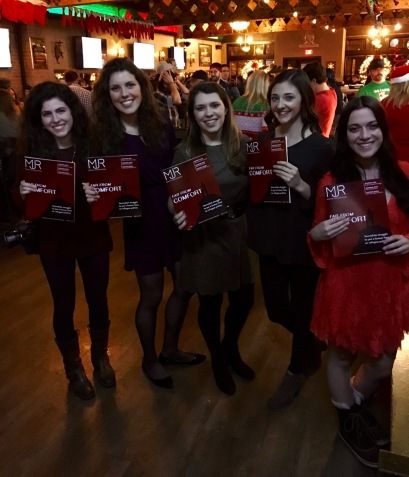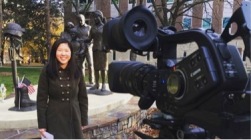
The new edition of Montana Journalism Review tracks Western journalists as national and global events push them past their comfort zones.
From local coverage of refugee resettlement to an experiment in right-wing news immersion, the 2017 issue of MJR scrutinizes how news professionals are responding to growing distrust in the media and ongoing changes in the industry.
Titled “Far From Comfort,” the magazine examines advocacy journalism, emerging business models and gender gaps in sports coverage and news management.
“With the proliferation of fake news and echo chambers, we worked hard to find stories that advance the conversation and show the state of the media in the western United States,” Managing Editor Claire Chandler said.
Work on the 46th edition began last spring, when Editor-in-Chief Henriette Lowisch and Executive Editor Keith Graham, both journalism professors, selected the student staff that puts together the annual magazine founded by J-School Dean Nathaniel Blumberg in 1958.
Over the following seven months, student editors, writers, photographers and designers learned how to problem-solve and work together as they brainstormed story ideas and headlines, recruited contributors, sold ads and got the 68-page book ready for print.
While Art Director Delaney Kutsal envisioned the magazine’s design elements, from color scheme to formatting, senior editors Diana Six, Katy Spence, Dakota Wharry and Bayley Butler handpicked stories and took them through three rounds of editing. Contributors to MJR 2017 include former Missoulian Editor Sherry Devlin and Wyofile reporter Dustin Bleizeffer as well as J-School alums Evan Frost, Tess Haas, Carli Krueger and Hunter Pauli. Current faculty, graduate and undergraduate students also wrote and photographed stories, including staff writer Maddie Vincent and staff photographer Olivia Vanni.
In October, final drafts were sent off to Copy Chief Taylor Crews, who organized her team for the stringent fact-checking and copy-editing process. Designers got their hands on copy in early November and faced a quick two-week turnaround.
In addition to the print magazine released on Dec. 16, 2016, MJR published its stories on its website at mjr.jour.umt.edu, under the leadership of Web Editor Matt Roberts. It also produced Framing a Movement: The Media at Standing Rock, a web documentary orchestrated by Senior Editor Kathleen Stone and funded with the help of the J-School’s Blumberg Fund for Investigative Journalism and UM President Royce Engstrom.
Montana Journalism Review is the product of a journalism capstone course offered each fall. The magazine is financed through ad sales and support from the School of Journalism. The print edition is sent out to 750 subscribers across Montana, the nation and the world.


